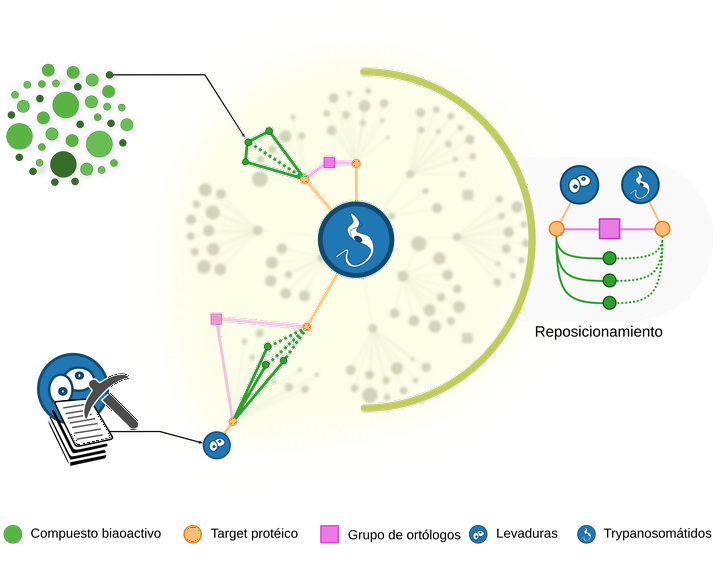Yeast-to-Tryp Drug Repurposing
 Genomics based drug discovery, by @leitouran
Genomics based drug discovery, by @leitouran
Chagas disease is caused by the Trypanosoma cruzi protozoan and vector-borne transmitted by the vinchuca, with a high prevalence in Latin America, especially in rural and low-income areas. Currently, the treatment consists of the administration of one of two trypanocidal agents (Benznidazole or Nifurtimox). Both drugs have demonstrated the ability to cure in patients with acute trypanosomiasis, but their effectiveness decreases in chronic patients; and the appearance of multiple side effects make it difficult for patients to adhere to treatment. Hence, there is an active search for new forms of treatment.
Genomic characterization of the cellular response in vivo to small molecule-mediated disturbance is essential to understand how cells survive the stress produced by them. The identification of the proteins and pathways involved in such disturbance is key to reveal the mechanisms of action of the drugs. Recently a series of chemogenomic assays in yeasts have been carried out, which characterize the response of large collections of mutants to small molecules and known drugs. Although the availability of pharmacogenomic associations between drugs and specific genes (“drug modules”) are scarce for T. cruzi and other trypanosomatids, the large number of trials obtained in yeasts can be used as a starting point to map these modules between species.
The objective of this project is to identify these modules conserved between yeasts and trypanosomatides to find novel bioactive compounds repositionable towards American trypanosomiasis (Chagas disease).